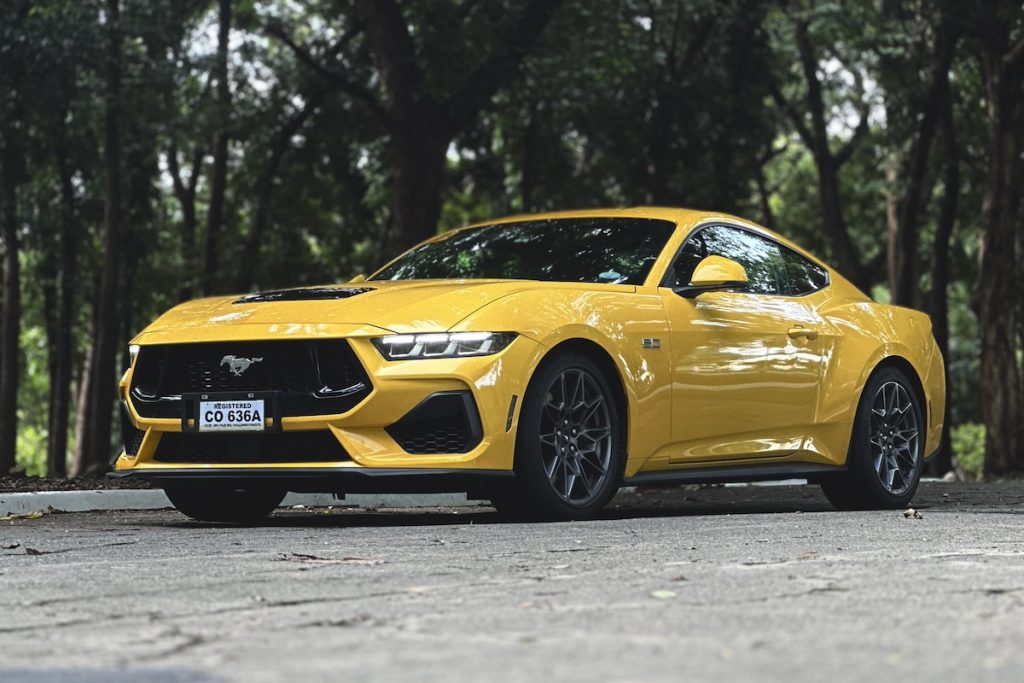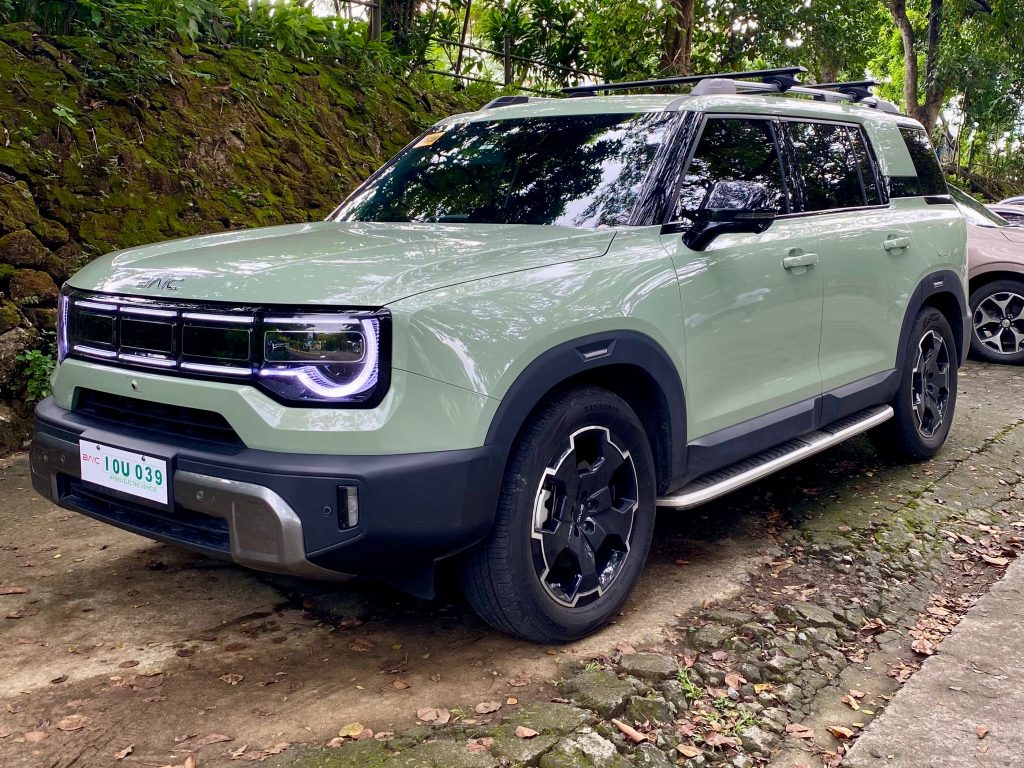By Ulysses Ang, Kap Maceda Aguila, Jacob Oliva, Vincent Villa, Manny de los Reyes, and Angel Rivero
Twenty twenty-four was a banner year for the Philippine car industry. Not only did it mark a post-pandemic sales figure that pretty much equals 2019’s best ever industry sales in Philippine automotive history, it also saw a dramatic shift not necessarily in sheer sales volume (which is resolutely increasing), but definitely in public perception—towards New Energy Vehicles.
Not surprisingly, more than half of our Top 10 list is either a hybrid or a fully electric vehicle. In making our choices, we agreed that the cars must all have been announced or launched in 2024. They don’t need to have been test driven to be nominated (this is not a car of the year award).
We then tallied our picks. Out of a theoretically possible 60 cars nominated, we ended up with 27 cars picked by our group of six writers. Here are the results:
1 – The leading car was a unanimous pick. All six of us nominated it.
2-4) Three cars from three different manufacturers got four nominations each (all three are hybrids).
5-10) Getting three nominations each were six cars from six different brands, two of which are hybrids and the other an EV.
The other 17 cars got either one or two nominations.
Here now are our Top 10 Most Important Cars of 2024.
Tied for 4th through 10th places with 3 votes apiece are the following:
Hyundai Santa Fe Hybrid

If there’s one vehicle that successfully reinvents itself with every succeeding generation, it’s the Hyundai Santa Fe. A product of Hyundai’s people-centric design, the fifth-generation Santa Fe is all about refinement, comfort, and user-friendliness. The boxy design may seem over-the-top at first, but it’s all about usability and flexibility inside; where else do you see a car that started its design, from all things, the tailgate? More than just providing first-class travel, it also adopts Hyundai’s cutting-edge strong hybrid system. With 237 horsepower, 367 Nm of torque, and a fuel economy of more than 13 km/L in the city, the electrified 1.6-liter turbo makes you easily forget the diesel engine.
Mazda MX-5

People who love driving know that for 35 years, the MX-5 (aka Miata) has always been the answer. It’s an automotive cliché at this point, but it still rings true. The fourth-generation MX-5 continues in 2024 with tweaks and changes that put it ever closer to perfection. The changes are all about the handling with enhancements that include sharper steering, a stability mode made for the track, and a clever new limited slip differential. There are even enhancements to its aesthetics and onboard tech. Oh, and in case this roadster isn’t extroverted enough for you, Mazda Philippines even offered motorsports-inspired Miata Cup 23rd Anniversary Edition and even AutoExe aftermarket performance parts and accessories.
Mitsubishi Xforce

It’s been a while since Mitsubishi Motors Philippines left the crossover segment with the ASX, so it’s high time for a replacement. Enter, the Mitsubishi Xforce, a beautifully designed crossover SUV with some off-road prowess and a Yamaha sound system in tow. Apart from the return to the crossover segment, the Xforce is the first Mitsubishi to carry the marque’s new design language—a preview of what’s to come. Our overall experience with this car was positive, so we’ll likely see an improvement of its presence in the months to come. But ultimately, the Xforce reinforces the Japanese marque’s lineup in the country, being the overall second brand locally in terms of sales.
Ford Mustang

The Ford Mustang S650 is not just another muscle car for the rich; it’s leap bounds an improvement compared to its predecessor, especially with its track manners and daily drivability. While mass-market models are almost always certainly the more important models for car brands, nameplates as iconic as the ‘Stang will always be earth-shattering. Believe it or not, the current Mustang can go head to head with more expensive sports cars, making it a relative bargain for those who want their rides fast.
Lexus LBX

Serving as the new entry point in the Lexus family, the Lexus LBX exudes a new style and design direction that’s unlike anything from the brand’s current lineup. It’s more curvy than sharp, complemented by minimalist but premium design cues in the cabin. The 136-horsepower hybrid system has on-point driving dynamics, joined by Lexus Safety System+ 3.0 to ensure every drive is as safe as it is enjoyable.
Hyundai IONIQ 5 N

Having the pure electric Hyundai IONIQ 5 N in this list is almost a no-brainer. Here’s a car that has the styling of a futuristic wagon/hatchback, the versatility of an SUV, and the performance of a supercar—all for the price of your neighbor’s Lexus. The IONIQ 5 N is the most awarded vehicle for 2024 (even if that’s not the reason the majority of us chose it). If your better half or your company will only allow you to buy a sensible, practical car, the IONIQ 5 N is the car for you. It’ll take you to work with no fuss every day, load a bunch of sporting equipment in the back for the weekend, then blow everyone away at your monthly trackday. And you never have to gas it up.
Tied for 2nd through 4th with four votes each are these three vehicles:
BYD Seal 5 DM-i

The transition to electrified mobility has reached an attainable range for a while now, but none has seen a package like what the BYD Seal 5 DM-i offers. It’s priced to compete with the reigning best-selling car in the Philippines—the Toyota Vios—but is sized bigger than a Honda Civic. Its hybrid powertrain can go up to 115 km on all-electric mode alone, or up to 1,250 km when combined with its traditional engine. Top it all up with premium appointments unseen at this price point and you have a game-changing hybrid sedan.
Honda Civic RS e-HEV

The Civic has always been an iconic car for Honda. With the launch of the Honda Civic RS e-HEV, Honda hasn’t just preserved the Civic’s spirit, but it has elevated it. The e-HEV’s hybrid system delivers instantaneous torque, making acceleration seamless and responsive. Inside the cabin is a driver-focused layout that ensures every journey is both comfortable and connected. The Civic RS e-HEV balances performance, safety, sustainability and practicality. Its fuel-efficient powertrain is a smart choice for today’s eco-conscious drivers who do not want to compromise the thrill of the drive. The model is testament to Honda’s ability to innovate while staying true to what made the Civic a household name in the first place. And it’s sure to win over a new generation of fans, as the Civic has already been doing for decades.
BAIC B30e Dune

When it was formally relaunched at this year’s Manila International Auto Show – this time under the aegis of established multi-brand distributor United Asia Automotive Group, Inc. (UAAGI). – Beijing, China-headquartered automaker BAIC, known for its lineup of SUVs and crossovers, made a splash via a five-model onslaught. But it crucially lacked a more affordable (yet no less capable) entry point SUV model. That was addressed by the later unveiling of the BAIC B30e Dune – blessed with attractive pricing, capability, and hybrid electric oomph. It starts at P1.488 million, the most inexpensive among BAIC’s off-roader offerings. The powertrain setup is comprised of an electric motor supported by a gasoline generator. Its more expensive variant sports both front axle and rear axle motors. The BAIC B30e Dune earns its spot on the list for lowering the hybrid SUV admission price as well as its cache of benefits and great performance.
Taking the win is our unanimous pick: the all-new Toyota Tamaraw
Toyota Tamaraw

Who would have thought that a commercial vehicle would be the unanimous choice for “10 Most Important Cars” of the year? The Toyota Tamaraw is indeed deserving of its inclusion and preeminence on this list for several reasons: It marks the return of a hallowed, 48-year-old nameplate (homegrown, to boot); it promises to be a vital tool of MSMEs (micro, small, and medium enterprises) through unparalleled flexibility and customizability – all the while leveraging the Toyota Motor Philippines (TMP) ecosystem; and, perhaps most importantly, it’s assembled at TMP’s Santa Rosa plant. This, plus the engagement of accredited third-party body builders and such creates jobs that are good for both people and the economy. It’s not hard to cheer for the Tamaraw.

